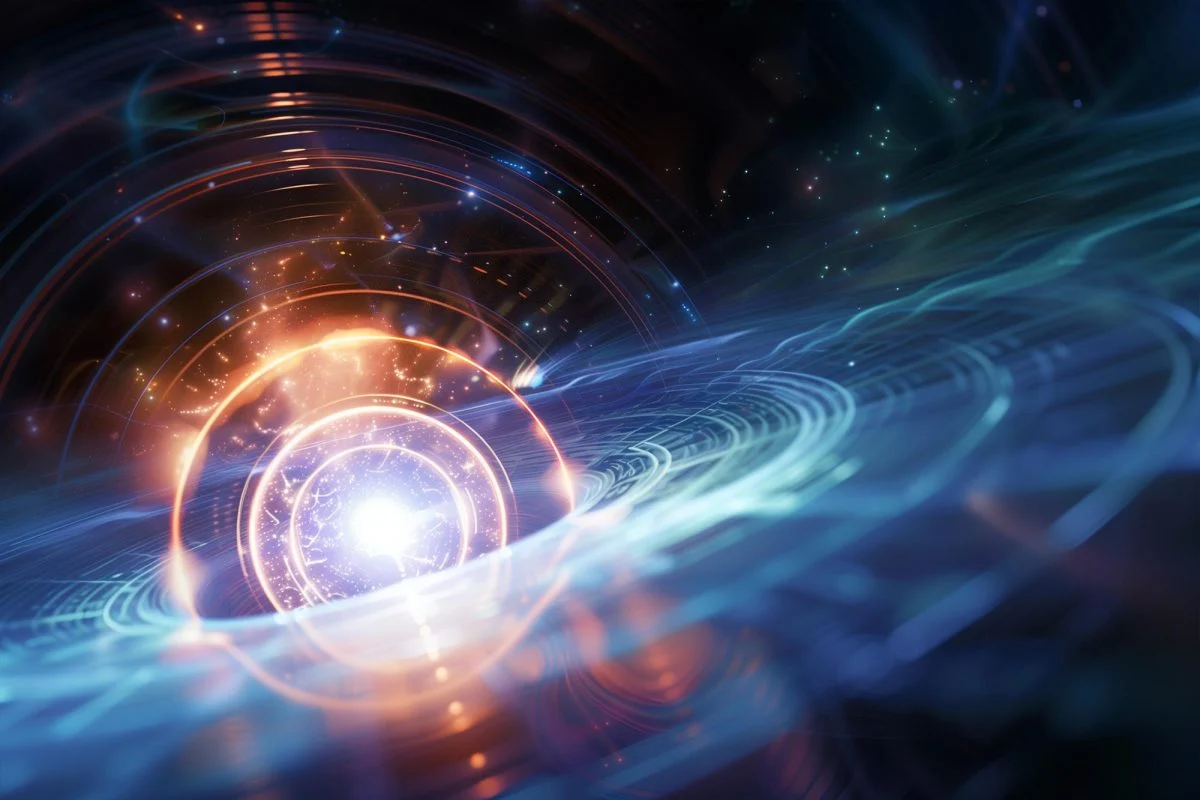"A team led by Stevens professor Igor Pikovski has proposed a way to detect single gravitons, the quantum particles of gravity, using advanced quantum sensing technology. Their research suggests this long-thought-impossible experiment may soon become feasible with future technological advancements. Credit: SciTechDaily.com" ScitechDaily, Thought To Be Impossible: Scientists Propose Groundbreaking Method To Detect Single Gravitons)
Researchers detected the graviton-looking particles in quantum experiments. In those experiments, they measured EM interactions with semiconducting materials. Researchers took those tests at three universities. "A team of scientists from Columbia, Nanjing University, Princeton, and the University of Munster, writing in the journal Nature, have presented the first experimental evidence of collective excitations with spin called chiral graviton modes (CGMs) in a semiconducting material." (ScitechDaily, From Theory to Reality: Graviton-like Particles Found in Quantum Experiments)
The graviton is the particle that should exist if gravity is an independent force like strong and weak nuclear interactions and electromagnetism. Each of those interactions has an individual transmitter particle called a boson. Fermions are particles that form material. Quarks and leptons are fermions. That means graviton should be boson too. The biggest difference between bosons and fermions is that boson's spin is 1 and fermion's spin is 1/2.
"Light probing a chiral graviton mode in a fractional quantum Hall effect liquid. Credit: Lingjie Du, Nanjing University" (ScitechDaily, From Theory to Reality: Graviton-like Particles Found in Quantum Experiments)
But what is the transmitter particle, or what does that particle do when it transmits interaction?
Each of the four fundamental forces is interaction. That means the smaller part of the fundamental interactions also pulls the objects together. And because all other than fundamental interactions gravity has a repel effect the same force also pushes objects away from each other. Fundamental interactions are also wave movement or radiation.
So, when the boson or transmitter particle transmits fundamental force, that particle sends the wave movement. The wavelength of the wave movement determines which is the case of the force. In simpler saying, each fundamental interaction has its individual wavelength. That means gravity has a different wavelength than electromagnetism. So the graviton should just send the gravitational radiation.
When we talk about repel interactions and things like antigravity, we should look at other well-known interactions like electromagnetism. The idea is that the magnetic and electric fields are orbiting magnets. The EM field just surrounds the magnet, and then if we put the N pole against the S pole, that thing pulls magnets together. The thing is that. The magnetic field orbits the magnet and the field returns to the magnet into its poles. Or it comes out from another pole and returns from another pole.When we put the N pole against another magnet's N pole (or S-pole against S-pole) we see that magnets push each other away. When magnets pull each other there forms a small EM, or quantum low pressure between those opposite poles. And the surrounding field pushes magnets together. When the same like poles(like S-pole against S pole) are against each other there forms standing waves between those magnets. That standing wave pushes those magnets away from each other.
In weak nuclear interaction, the Z, and W (W+ and W-) bosons act like magnet poles. If the W boson is against the W boson the weak nuclear interaction repels the protons and neutrons.
Normally W and Z bosons form the string or channel that pulls the protons and neutrons together. That thing is a similar reaction to the electromagnetic interaction, opposite bosons will pull particles together and the same bosons push them away. Two W bosons make the standing wave between the protons and neutrons. And then that pushes them away.
So theoretical antigravity is the standing wave between gravitons. The graviton sends the gravitational waves that make similar standing waves as the W and Z bosons and the N/S poles in EM interaction. The transmitter particle in electromagnetism is a photon.
Photons are things that push electrons away from each other. The quantum magnetic field that travels through the atom's nucleus keeps the electrons at their orbiters. The outcoming energy field keeps that energy field at a certain distance from the atom's nucleus.
The electron sends a photon when it changes its orbiter. The photon is the particle itself and when it turns itself into waveforms, that releases energy. In some models, dark energy is the energy, or wave that a photon transmits when it turns into wave movement.
https://www.sciencefacts.net/atomic-nucleus.html
https://scitechdaily.com/from-theory-to-reality-graviton-like-particles-found-in-quantum-experiments/
https://scitechdaily.com/thought-to-be-impossible-scientists-propose-groundbreaking-method-to-detect-single-gravitons/
https://en.wikipedia.org/wiki/Fundamental_interaction
https://en.wikipedia.org/wiki/Graviton
https://en.wikipedia.org/wiki/Standard_Model






No comments:
Post a Comment
Note: Only a member of this blog may post a comment.